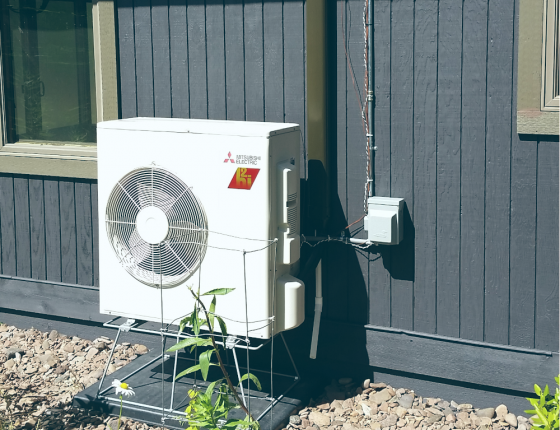Objective
Air source heat pumps (ASHPs) are a high-efficiency technology with the potential to improve space heating and lower energy costs in homes located in cold climate regions where natural gas isn’t available. Although ASHP technology has been available for quite some time, technology limits have resulted in concern over the effectiveness of ASHPs in states with colder climates like Minnesota’s.
The project found that the efficiency and capacity of older ASHPs drops significantly for outdoor temperatures below 40°F. However, the newest generation of ASHPs can operate down to 0°F to -13°F. The efficiency of these technologies in moderate climates is also two to three times more efficient than standard electric heating systems. Research project staff monitored field performance tests to help confirm the operation of newer generation ASHP technologies to support their use in Minnesota's utility Conservation Improvement Program (CIP).
Methodology
ASHPs were installed in six occupied Minnesota homes where natural gas was unavailable. Propane furnaces were used for back-up at four sites and the existing electric resistance baseboards were used for back-up in two homes. Staff alternated between furnace or electric resistance baseline and ASHP operation throughout the heating season to compare energy use of the two systems during milder conditions. Monitoring of equipment helped characterize the energy use and determine if the system could effectively meet the space heating load. The annual energy use and contractor installation cost was used to determine cost effectiveness. Occupant comfort and acceptance was evaluated from monitored space temperatures and occupant surveys. The results from the field study determined ASHP savings potential and helped facilitate the design of CIP.
Results
Main research conclusions:
Summary of savings in Minnesota homes
-
Inverter driven cold climate ASHPs are capable of operating at very cold temperatures. The monitored performance of the heat pumps systems verify that their installed performance is in line with the manufacturer performance specifications.
-
When heat pump equipment is installed and operated with an appropriate back-up system they provide a cost effective and energy efficient space conditioning option for homes without access to natural gas.
CIP Recommendations
Program options
Consider additional metrics that account for savings beyond site energy savings, including emission reductions, source energy savings, and costs.
In instances where ccASHPs are determined to be beneficial (i.e. switching off delivered fuels or replacing less efficient electric resistance heat), there are two options to ensure ccASHP installations are capable of achieving good heating performance. The program should use specific installation requirements for the technology and the installation:
-
Technology: the heat pump should be an inverter drive, have a HSPF ≥ 8, and be sized to meet 100% of the homes’ heating load at outdoor temperatures ≤ 10°F. If installation requires a back-up heating system to meet the homes’ load below 10°F down to the design conditions (-11°F in metro area), the heat pump operation should be prioritized so that backup is only used when needed.
-
Or, the program could take a tiered approach where the expected savings and performance are based on a calculator or look-up table. Depending on the rated ccASHP performance, installation and capacity of the ccASHP, a tiered savings could be determined. The base level savings could be assumed for any heat pump installation. A larger second tier savings would be given if the equipment meets a minimum rated performance (i.e. HSPF ≥ 7) and the heat pump was installed so that it would meet the full load down to heating moderate temperature (i.e. OAT change point ≤ 25 °F). The largest savings tier would require the highest system performance (i.e. HSPF ≥ 9 and OAT change point ≤ 5 °F). These tiers and the performance metrics could be determined through the use of a calculator.
Project Summary
Objective
- Monitor the efficiency and heating performance of new generation air source heat pumps in Minnesota cold climate homes.
- Identify the house characteristics and existing system types that are best suited for ASHPs.
Scope
New single and variable speed ASHP technologies will be field tested in 6 Minnesota homes.
Non-energy benefits
- Improve occupant comfort for many homes.
- The summer AC dehumidification performance may provide better humidity
Project related reports and tools
